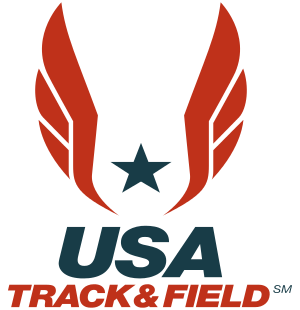How to Organize a 5K
Organizing a 5K can be a very enjoyable and rewarding experience. Although there is more work involved than most of your runners might realize, making your first race evolve from an idea into reality is ultimately very gratifying for race directors. Below are some of the most important steps to consider when planning, promoting, and executing your first 5K race (most of the same steps apply to marathons and half marathons as well).

Planning a 5K
When planning your 5K it is important to consider your options for a location at which the race will be held, the characteristics of the course that you wish to have, whether or not you will implement a theme to your race, and if it will be associated with a charitable cause.
Create an Online Race Registration Form
You can increase your participation if you simplify your registration process. When picking an online registration provider make sure it utilizes a simple checkout process that doesn't require accounts for runners. Fewer pages in your registration process makes it easier to complete registration forms, and you will make more money. Online fees can vary widely among different providers. Compare top race registration providers rates, and benefits.
Create a Registration FormRunning Location
You should organize your race in a location where a sizable portion of your prospective runners live. Depending on the expected size of your race, you may also need to consider how many hotels are in the area to accommodate your runners. As it pertains to picking a location, many race directors also factor in the scenery of potential race routes.

How to Create a Race Course
You will want to have a race course that gives runners a unique experience. This could mean a nice gentle downhill course, or perhaps conversely, a challenging uphill one, depending upon the demographic you want to cater to. Often runners want a route that is flat or gentle downhill, so if you want to draw more participants, it is ideal to avoid hills. If it is necessary for you to minimize expenses, you may want to have an out-and-back or a loop course to avoid the expense of transporting runners. You can use our FREE race map creator to figure out different course options, and look at the elevation chart change as you alter the route.
Create FREE Race Map
How to Plan a Fun Run or a Charity Race
You might consider organizing a fun run or a run with a charitable cause. Fun runs have become increasingly popular in the past few years. They range from costume races to extreme survival races. Fun runs tend to attract more participants that don’t consider themselves to be runners. It is more of the thrill than the running that brings these extra participants out. Charitable cause races have a similar effect of bringing out participation from people that may not have otherwise considered a 5K. If you decide to do a theme you should consider the expenses associated with that theme, and make adjustments to your race to fit your theme. For example, if you want to make a Halloween race then you might consider holding the event in the evening. When deciding if you should involve a charity you might want to reach out to a few charities to see which ones would help you the most with volunteers and promotion of the event. Learn how to create a charity race fundraiser here.

Promoting Your Race
When promoting your marathon, half marathon or 5K you want to come up with a good name, and a strategic advertising plan.
How to Pick a Race Name
When planning the name for your race, find out which names are already taken in your local area, and nationally so you will know what race names may still be available. Similar to a business, your race name will give a feeling and imply an experience. If you named your race the “Vermont Tough Race”, it would have a different feeling than a name like the “Lemonade Fun Run”. Names absolutely matter. If you want a serious race you should pick a race with a serious name. If you are planning a fun run you should pick a name that sounds fun. In some instances it may be wise to name your race after you have picked a course or theme. View tips on how to grow race participation.

How to Advertise a Race
When advertising your marathon, half marathon, or 5K you should consider who your target audience is. If you are creating a fun run you might market through channels outside of runners in addition to traditional advertising. For example if you have a race that has a live concert you might want to advertise at other events with live music. If your race has a charitable cause you may want to have the charity you benefit utilize their social media and their email list to promote your event. Sometimes the charity will be willing to distribute posters and do other volunteer work to help you promote your race. When marketing your race you should consider putting posters or fliers up at all the running stores within the radius that you believe most runners will be willing to travel. Sometimes you can find property owners of land at busy intersections that will allow you to put up a banner on their fence. This can be an inexpensive way to get the word out about your race. Some races will put up dozens of signs to promote their event.

A great way to promote any type of running event is to advertise at other races. Some races will let you put fliers in their race bags, or maybe you could pay to have a booth at their event to talk with runners directly. Sometimes you can do an email trade with another event (they email your runners if you can email their runners). There are limitless ways that you can advertise your running event. The most important thing to consider is who your main audience is and where or what is the best means of getting in front of them. The second most important thing is what message to present to this audience. You need to give them a message that is compelling and concise. You may want to create a press release about your new event, or if it is not new, make a press release about any changes you have for this year. It is wise to try to have your race listed on ever online race calendar you can find. Start by including your race on our calendar today.
How to Execute Race Creation
The execution of a race is bringing all the details together from your planning stages, and making them actually happen. Below is a long list of things to do when creating a race:
Race Sponsorship
Spend some time contacting local businesses to see if they would be willing to provide products or services that might help improve the quality of your race. Some of these local businesses may even be willing to contribute money for your event sponsorship. It might be wise to make a marketing flier with tiered sponsorship levels that they can pay for. Some sponsors may be more likely to sponsor your race if you benefit a charity that they are connected to.

Race Permits
Make sure you check with your local government to determine what permits are required for the type of race you want to create. You will most likely be required to provide insurance coverage of your event to receive a permit, and you will want coverage to protect your company or whomever is responsible for putting on the event.

Race Timing
When deciding on a timer to use, you need to consider pricing, technology, and experience. A new timer with the best technology is risky as they may not know how to use the technology properly. An experienced timer with poor technology will not get proper read rates, and your results will not be as reliable as your participants expect. A timer that is very experienced with the best technology can be expensive. Depending on the size of your race you may want to pick a timer with good experience with decent technology. Consider sending out a bid request to several timers in your area. Ask them all for pricing, read rates on the chips, and for references. If you can call some of the races that have timed you can get a sense for how competent they are with their system, and how reliable they are. Timing is a large portion of your budget, so you want to make sure you get the right timer for your needs.
Find a Local Race Timer
Aid Stations and Hydration
Provide plenty of water, and if possible, another beverage with electrolytes to runners. Often aid stations are placed every two miles. For longer runs like marathons the aid stations sometimes include food, and pain relievers.

Food
Depending on how long your race is, you may consider having food on the route and in the finish area. Runners prefer food on the route that can be eaten easily and digested quickly. If possible, try to include food in your finish area that is high in protein. Often you can find a local market or restaurant to provide food for your race in trade for sponsorship.

Race Shirts
Most races provide their runners with a race shirt. Often this is an athletic polyester shirt, but first year 5K races sometimes provide cotton shirts to reduce cost. Try to find a shirt vendor that will allow you to make a shirt order a couple weeks before your event, and then make a smaller follow-up order a few days before your race. This can help a first year race because you won’t know exactly how many people are going to sign up on race week. Newer races can double in size in the last couple weeks. This makes ordering shirts tricky. Some shirt vendors will be more willing to commit to meet your last-minute needs than others, so price is not the only factor you should consider when choosing a company for screen printing your race shirts.

Finisher Medals
Medals are usually given to participants that complete a marathon or half marathon, but some other running events give them out as well. Medals can be pricey if they are purchased in small quantities. It can be very hard for a first-year race to know the proper quantity to order. When your race becomes large you can order overseas and in advance, saving thousands of dollars. In your first year you may want to try to make your medals locally where you can order closer to your race date. Almost any shop that makes belt buckles or does other metal work can create your race medals.

Awards
Many races have awards for age division winners. Sometimes these awards are just for first place, but they often go three to five deep. Some large races choose to give out prize money. USATF regulations stipulate that overall awards need to be based upon gun time. Age division awards can be based upon chip time.

Portable Restrooms
Restrooms are a very important part of any race. The longer the duration of your event the more important they become. Even with a 5K you should consider having portable restrooms in your finish area at a minimum, and probably have some at your starting line and a couple on the route. These units can be very pricey when purchased in small quantities, so shop around to find a good price. You may want to have your 5K start or end in a park that has restroom facilities to avoid some of this expense. With a marathon or half marathon you will want to have the restrooms abundantly placed in the start & finish. With these longer races it is also most common to have restrooms every two miles.

USATF Certification
If you are creating a marathon it is a good idea to get your route USATF Certified. This certification simply allows marathon runners to qualify for the Boston Marathon on your full marathon route. USA Track and Field charges fees to provide this service. Check with your local USATF office to find rates for course certification.

How to Find Volunteers for Your Race
Finding volunteers for your marathon, half marathon or 5K can be a challenge. There are many community organizations that need volunteer hours. Here are some ideas to check with: student volunteer organizations, businesses, scout troops, troubled youth groups, cheerleading squads, youth organizations, other race volunteer email lists, etc. Often it is good to have some sort of gift or party for your volunteers, so they will be more excited to continue to volunteer for years to come. Consider using our entirely FREE-to-use volunteer registration form.

When to Open Race Registration
Races that open registration early usually have greater participation. Runners that visit your race website throughout the year may not think to come back in six months & register. Many race directors choose to open registration when it is convenient for themselves, but the ideal time to open registrations is immediately after the previous instance of the event, usually one year before. This ensures that your participants will be able to sign up as soon as they are ready. Also, it is important to remember that your greatest source of race growth is friend and family referrals from your participants that have already signed up. The earlier you can have people signed up for your race, the more time they have to talk about your event.

There are a lot of factors to consider when choosing a race registration service provider. Keep in mind that the registration process is the most important part of your customer’s online experience. The online fees impact the total cost of running your event, so the lower the fees the better. Make sure that the registration service provider you choose keeps the registration process as clean and simple as possible. Many registration services will add additional pages to the registration process to promote unrelated offers from other companies. However, runners prefer a simple and clean registration process free of distracting content. The fewer pages to click through, the better. When consumers are required to click through more pages, you get more dropouts. Using a simple registration service provider will ensure that runners will through the payment quickly, and your race participation will grow. Most customers will see the registration pages as an extension to your own site, so choosing the best registration experience will help to maximize your brand. RaceEntry.com is the leader in simplified race registration. We offer very low fees with a full set of features that help you to dramatically grow your race with ease.
Event Safety
Coordinate the police and security for your event. Make sure that you have the proper traffic safety devices like cones, and crowd control barricades if your venue requires them.

What Medical Considerations are Needed When Planning a Race
The distance of your event and the number of participants will determine the amount of medical personnel needed. Longer races such as marathons should have EMTs on the route, and a medical tent in the finish area with doctors and nurses handy to help with minor medical problems. It is wise to have an ambulance in the finish area to haul off runners that need serious medical attention. Most smaller 5K’s do not need much medical attention. It may be wise to consult with a sports medicine professional in your area to see what the specific needs of your event may be.

How to Create a Race Website
There are many strategies to creating a race website for a marathon, half marathon or 5K. Some people have friends or relatives that know web design. Some races contact website companies to see if they will trade web development for sponsorship. Some races use a free website blog service to host the information about the race. An example of a free website design company is http://www.weebly.com. Make sure that your race website has lots of information. Information you might include on your website could include: pricing, registration deadlines, course maps, hotel information, race date/start time, photos, video, elevation charts, race results, etc. Post FREE online race results.

Course Clean up
Clean up is often a job that is overlooked. This job is actually one of your most important jobs. Events can be banned from communities if they are not left as clean as they were found. It is generally a good idea to have fresh bodies of people in charge of cleanup that didn’t have to help with the set up. At the end of an event both you and your other volunteers will be exhausted, so try to have fresh people come in to help cleanup.

Other Supplies Needed to Organize a Race
You may want some or all of the following supplies: safety pins, bib numbers, zip ties, draw-string race bags, mile markers, directional signs, trash boxes, awards stand, results board, light tower generators, sound system, finish structure, starting line structure, tents, tables, chairs, cups, coolers, etc. There are many other supplies that could be considered depending on what type of running event you are doing. It is wise to make a list of these items, and many of them can be rented. When renting supplies you often pay far less than purchasing them, and you don’t have to store them all year. Learn more about supplies needed for organizing a virtual race here.
Let us help you make your race a huge success. Our race-expert staff can advise you along the way, and our simple registration platform will increase your participation. Start today by making an account.






